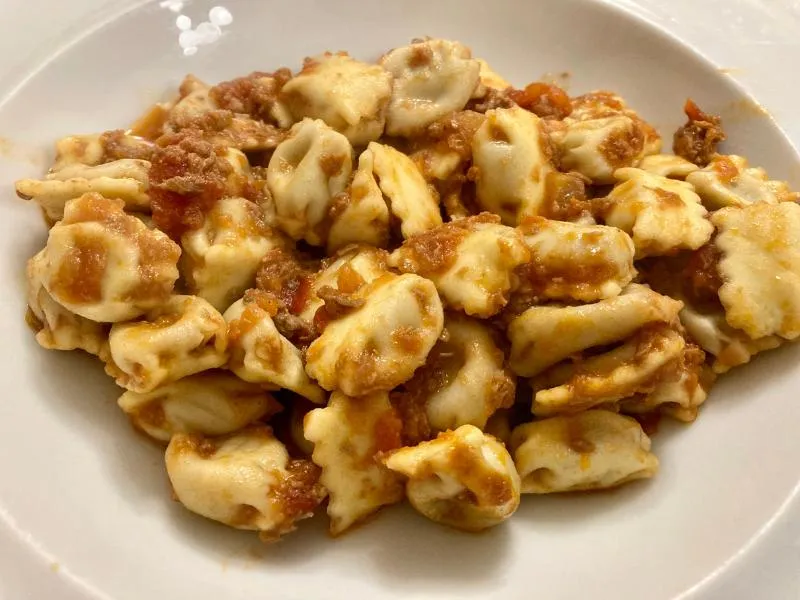Agnolotti del Plin
Small pinched pasta pouches filled with roasted meats and vegetables, served with a savory reduction.
👉 View Authentic Recipe 👈
About This Dish
Agnolotti del Plin is a treasured specialty from Piedmont in northwestern Italy, where the name “plin” refers to the pinching technique used to seal these small, elegant pasta pouches. Dating back to the 12th century, this dish emerged as a practical way to repurpose leftover roasted meats, transforming them into a luxurious filling encased in thin sheets of egg pasta.
Traditionally, the filling combines roasted meats (typically veal, pork, and rabbit) with vegetables, herbs, and Parmigiano-Reggiano, all bound together with a touch of stock or wine. The distinctive preparation involves folding a thin sheet of pasta over the filling and pinching (“plin”) at intervals to create individual pouches, resulting in their characteristic rectangular shape with ruffled edges.
Originally served in households during special celebrations and Sunday family gatherings, Agnolotti del Plin represents Piedmontese culinary ingenuity and resourcefulness. They are classically served with a light meat reduction (sugo d’arrosto), melted butter and sage, or simply with Parmigiano-Reggiano and a drizzle of the region’s famous Barolo wine.
🧑🍳 Analyzed by CucinaBot
Why This Dish Works
Agnolotti del Plin achieves culinary excellence through the contrast between the delicate pasta exterior and the concentrated, umami-rich filling. The roasting process of the meats creates Maillard reaction compounds that develop deep flavor, while the small size of each piece ensures a perfect pasta-to-filling ratio. The classic serving methods (butter, meat reduction, or wine) complement rather than overwhelm, allowing the complex filling flavors to remain the star.
Key Success Factors
- Pasta Thinness: The pasta should be rolled extremely thin (almost translucent) to achieve the proper delicate texture
- Proper Filling Balance: The meat mixture must be finely minced and include enough moisture to prevent dryness without becoming soggy
- Consistent Pinching: The “plin” technique creates pockets of consistent size, ensuring even cooking
- Resting Period: Allow the formed agnolotti to rest briefly before cooking to ensure the pasta properly adheres and seals
Common Pitfalls
Many non-authentic versions complicate this dish with excessive ingredients or improper fillings like ricotta cheese, which belongs to other stuffed pasta traditions. The filling should never be overly wet, which would compromise the pasta’s integrity during cooking. Additionally, many recipes fail to emphasize the importance of proper reduction in the filling—all excess moisture must be cooked off to prevent the agnolotti from becoming soggy or bursting.
How to Judge Authenticity
When reviewing recipes, look for these markers of authenticity:
- Uses leftover roasted meats or specifically roasted meats (not raw meat mixtures)
- Incorporates traditional Piedmontese ingredients (like Parmigiano-Reggiano, not other cheeses)
- Specifies the characteristic pinching (“plin”) technique
- Recommends simple serving preparations that showcase the pasta (butter and sage, light meat broth, or wine reduction)
- Maintains small size (typically 2-3 cm) rather than larger ravioli-style formations